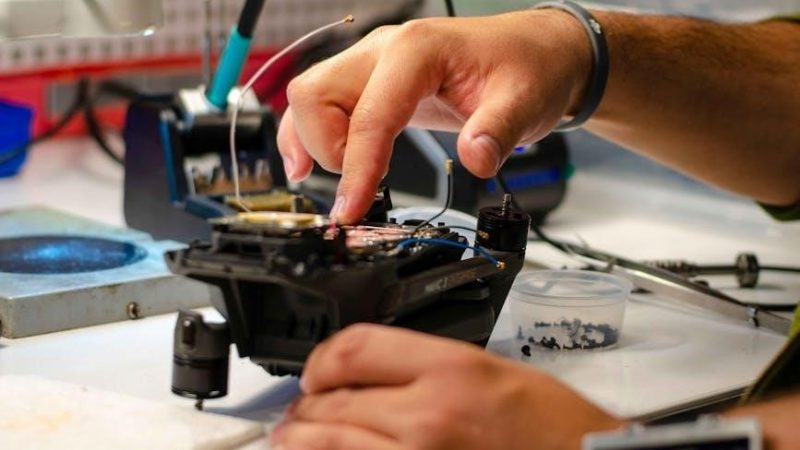oasis e manual

OASIS-E Manual: A Comprehensive Guide
The OASIS-E Manual serves as a vital resource for home health agencies. It offers detailed guidance on collecting and reporting standardized data. This data is crucial for quality measurement and improvement initiatives within the home healthcare sector‚ ensuring accurate patient assessments.
The Outcome and Assessment Information Set (OASIS-E) is a standardized data collection tool. It is specifically designed for adult home health patients. It’s a critical component for agencies striving for quality improvement and accurate patient care assessment.
OASIS-E marks a significant update in data collection practices. It replaces previous versions‚ like OASIS-D‚ bringing crucial changes to how home health agencies operate. Understanding these changes is paramount for compliance and effective data utilization.
This manual is essential for navigating the complexities of OASIS-E. It offers comprehensive guidance on data collection conventions and item-specific instructions. By using the manual‚ agencies can ensure the accuracy and reliability of the data they report.
The OASIS-E aims to standardize data elements. These elements are used for measuring and improving the quality of home healthcare services. This standardization allows for better benchmarking and comparison across different agencies. This helps to improve patient outcomes.

Understanding OASIS Data Collection
OASIS data collection involves gathering standardized information on home health patients. This information is used to assess patient needs. It also helps measure the quality of care provided. Accurate collection is essential.
Purpose of OASIS Data
The primary purpose of OASIS data is to standardize the collection of patient information. This standardization facilitates comprehensive assessments in home health settings. The collected data serves multiple critical functions within the healthcare system‚ contributing to improved patient outcomes and efficient resource allocation.
Specifically‚ OASIS data plays a vital role in measuring the quality of care provided by home health agencies. It allows for tracking patient progress‚ identifying areas for improvement‚ and benchmarking performance against national standards. This data-driven approach enables agencies to refine their practices and enhance the overall patient experience.
Furthermore‚ OASIS data supports informed decision-making regarding patient care planning. By providing a detailed snapshot of a patient’s condition‚ functional abilities‚ and healthcare needs‚ it empowers clinicians to develop personalized care plans. These plans are designed to address specific challenges and promote optimal recovery and well-being‚ using standardized data for all payer types.
Importance of Accurate Data Collection
Accurate data collection in the OASIS framework is paramount for several reasons. First and foremost‚ it directly impacts the validity and reliability of quality measures. If the data entered into the OASIS system is flawed or incomplete‚ the resulting quality scores will be skewed‚ leading to inaccurate assessments of agency performance and compromising quality.
Secondly‚ accurate OASIS data is essential for appropriate reimbursement. Payment models often rely on OASIS data to determine the level of care required and‚ consequently‚ the amount of reimbursement an agency receives. Inaccurate data can lead to underpayment or overpayment‚ both of which have financial implications for agencies.
Moreover‚ accurate data collection contributes to better patient outcomes. When clinicians have access to reliable information about a patient’s condition and needs‚ they can make more informed decisions about care planning and interventions. This‚ in turn‚ leads to more effective treatment and improved patient well-being. Therefore‚ prioritizing accuracy in OASIS data collection is a critical component of providing high-quality home healthcare.

OASIS-E1 Manual: Key Updates for 2025
The OASIS-E1 Manual introduces crucial updates for 2025‚ impacting data collection and reporting. Home health agencies must adapt to these changes to ensure compliance and maintain accurate data submission‚ which is essential for proper reimbursement.
Accessing the OASIS-E1 Manual
Accessing the OASIS-E1 Manual is a critical first step for home health agencies preparing for the 2025 updates. The manual‚ essential for compliant and accurate OASIS data collection‚ is available through various channels. Notably‚ the official CMS publication of the OASIS-E1 Guidance Manual‚ updated for 2025‚ can be acquired from OASIS Answers.
This resource offers comprehensive guidance‚ enabling agencies to navigate the complexities of the updated assessment instrument. Furthermore‚ links to the final documents‚ a table outlining changes‚ and valuable tips for training staff and EMR vendors can be found online. Staying informed about the accessibility options ensures agencies can readily obtain the necessary materials for successful implementation.
By proactively seeking out and utilizing these resources‚ home health agencies can ensure a smooth transition to the OASIS-E1 version‚ effective from January 1‚ 2025. This proactive approach contributes to the collection of high-quality OASIS data‚ ultimately benefiting patient care and agency performance.
Changes and Impacts of OASIS-E1
The transition to OASIS-E1 brings forth several key changes that significantly impact home health agencies. Understanding these changes is crucial for ensuring accurate data collection and compliance. The OASIS-E1 version‚ effective from January 1‚ 2025‚ introduces updates to the assessment instrument‚ requiring agencies to adapt their processes and training programs.
One significant impact is the need for staff to familiarize themselves with the revised item-specific guidance. This includes understanding the nuances of each data element and how they contribute to the overall assessment. Furthermore‚ EMR vendors must update their systems to accommodate the new OASIS-E1 requirements‚ ensuring seamless data capture and reporting.
Agencies should also be aware of the changes related to all-payer OASIS data collection‚ which expands the scope of OASIS reporting. By proactively addressing these changes and impacts‚ home health agencies can minimize disruptions and maintain high-quality data‚ ultimately improving patient outcomes and agency performance.

Practical Guidance for Home Health Agencies
This section offers practical advice for home health agencies navigating OASIS-E implementation. It includes item-specific guidance‚ examples‚ and resources. These tools are intended to ensure accurate data collection and compliance‚ and improve overall care quality.
Item-Specific Guidance and Examples
This section delves into the specifics of OASIS-E data collection‚ providing detailed guidance for each item within the assessment. Understanding the nuances of each data point is critical for accurate and compliant reporting.
Home health agencies will find clear explanations of item intent‚ proper coding procedures‚ and common pitfalls to avoid. Real-world examples are provided to illustrate how to apply the guidance in various patient scenarios‚ ensuring consistent and reliable data collection across the agency.
These examples cover a wide range of patient conditions and care settings‚ offering practical solutions to common challenges encountered during OASIS-E assessments. By carefully reviewing the item-specific guidance and examples‚ clinicians can enhance their understanding of OASIS-E requirements and improve the accuracy of their assessments.
This‚ in turn‚ leads to more effective care planning and better patient outcomes‚ ultimately contributing to the overall quality of home health services. This section is an invaluable resource for training new staff and reinforcing best practices for experienced clinicians.
Training and Resources for Implementation
Successful implementation of OASIS-E requires comprehensive training and readily available resources for all staff involved in data collection and reporting. This section highlights the various training opportunities and resources available to support home health agencies in their transition to OASIS-E.
Agencies can leverage online training modules‚ webinars‚ and workshops to educate their staff on the new requirements and best practices. These training programs often include interactive exercises and case studies to reinforce learning and ensure competency.
In addition to formal training‚ a wealth of resources are available to assist agencies with OASIS-E implementation. These resources include the official CMS OASIS-E Guidance Manual‚ change tables outlining updates from previous versions‚ and frequently asked questions (FAQs) documents.
Furthermore‚ many organizations offer consulting services and software solutions to streamline the OASIS-E data collection and reporting process. By utilizing these training programs and resources‚ home health agencies can ensure a smooth and successful transition to OASIS-E‚ minimizing errors and maximizing the value of their data.

Transitioning to All-Payer OASIS Data Collection
The shift towards all-payer OASIS data collection marks a significant evolution in home health data reporting. This transition expands the scope of OASIS assessments beyond Medicare and Medicaid patients to include all individuals receiving home health services‚ regardless of their insurance coverage.
This expanded data collection aims to provide a more comprehensive understanding of the home health landscape. This will help in improving care quality across diverse patient populations.
Home health agencies must adapt their data collection processes to accommodate this broader scope. This includes ensuring that all patients‚ regardless of payer source‚ receive a standardized OASIS assessment upon admission‚ discharge‚ and at other designated time points.
Effective training and education are crucial to ensure that staff are proficient in administering OASIS assessments to all patients. They must also be able to accurately capture the required data elements. The transition to all-payer OASIS data collection requires careful planning and execution to minimize disruption and maintain data quality.
Ensuring Data Accuracy and Compliance
Data accuracy and compliance are paramount in OASIS data collection for home health agencies. Accurate OASIS data is essential for quality reporting‚ reimbursement‚ and regulatory compliance. Errors in data collection can lead to inaccurate quality scores‚ payment denials‚ and potential penalties.
Home health agencies must implement robust quality assurance measures. These measures should include regular audits of OASIS assessments‚ ongoing staff training‚ and adherence to established data collection conventions. These measures are crucial for maintaining data integrity.
Compliance with OASIS guidelines is also critical. Agencies must stay informed about updates and changes to the OASIS assessment instrument and reporting requirements. This also includes following all applicable regulations and guidelines set forth by CMS and other regulatory bodies.
Effective communication and collaboration between clinicians and data entry staff are essential for preventing errors and ensuring that OASIS data accurately reflects patients’ conditions and care needs. Agencies should establish clear processes for data validation and error correction to maintain data accuracy and compliance.



